5 of the best gas-saving cars and the tech behind them
The electric motor is here to stay

Spend less time doing this and more time driving
Back in the '80s and '90s, if you wanted a fuel efficient car, you were forced to find a small car with a sputtering, fuel-sipping engine. Today, buyers looking for a fuel efficient vehicle have more choices than ever before.
We still have a few vehicles on the market that stay true to the "small engine with even smaller performance" principle but, thanks to the arrival of the electric motor, things have changed. It's no secret that hybrid and electric vehicles are easily the most efficient cars on the market.
We've put together a list of five of the best. But not only that, here's a glimpse of what makes each whip go.
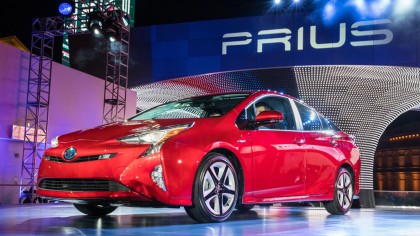
Toyota Prius
The Toyota Prius essentially started the hybrid revolution back in the early aughts. The Prius, which is now about to enter its fourth-generation, has consistently been one of the most fuel efficient hybrids on the market. How does it do it?
For starters, the car is powered by a fuel-efficient four-cylinder engine and an electric motor. During slow stop and go traffic, the Prius's electric motor is able to keep the Prius moving along and then when speeds begin to pick up the 1.8L four-cylinder kicks in.
The current Prius has a 51 miles-per-gallon (mpg) highway rating. The next-generation, 2016 Prius is expected to best that by about 10% - giving it a rating around 55 mpg.
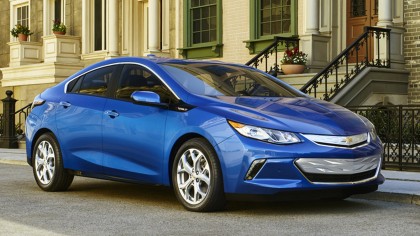
Chevy Volt
If the Toyota Prius is the face of the hybrid segment, then the Chevy Volt is easily the face of the plug-in hybrid segment. The Chevy Volt has only been around since 2011, but it signaled the arrival of a new generation of green vehicles that would be even more fuel efficient than their hybrid predecessors.
While the current standard Prius can only travel about a mile in fully electric mode, the Volt trounced that with the ability to travel up to 38 miles (about 61 km) on electricity alone. Once that 38 miles is up, the Volt's four-cylinder gas engine kicks in to charge the battery and electric motor, giving the Volt a total driving range of 380 miles (about 611 km). The next-generation, 2016 Volt is going to up the ante even further, with a 53-mile electric driving range and a total driving range of 420 miles (about 675 km).
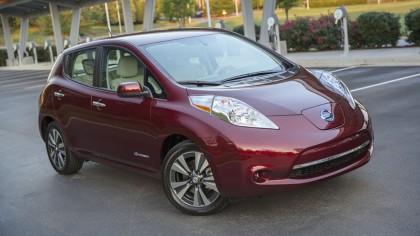
Nissan Leaf
Electric cars aren't an entirely new concept, if you can remember the General Motors EV1, or the Honda EV Plus. Both electric vehicles were produced in very limited numbers in the late '90s, but they were a preview of the future.
Fast forward to 2010, when Nissan released the Leaf electric car, the first electric car for the masses. Powered by a 107-horsepower (hp) electric motor and a lithium-ion battery, the Leaf has an 84-mile driving range and takes up to five hours to recharge on a 240-volt outlet.
For 2016, Nissan is giving the Leaf a 30kWh (or kilowatt-hour) larger battery. That boosts its driving range to 107 miles, which is further than any of the Leaf's direct competitors.
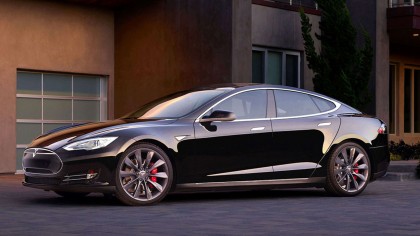
Tesla Model S
Probably the biggest reason that car buyers have stayed away from electric cars is because of this little thing called "range anxiety." For decades, buyers have been used to driving gas or diesel powered cars that can drive 300 miles (about 482 km)or more on a single tank of gas, which then can be easily refueled in a matter of minutes.
The electric car is not quite at that level yet, since most of them can only drive 80 to 100 miles (about 128 to 160 km)on a single charge, not to mention that nearly nonexistent infrastructure. But one automaker has changed that: Tesla.
The Tesla Model S is one of the most sought after electric cars on the market, and not only because of its sexy exterior. The Model S has a driving range up to 270 miles (about 434 km), which puts it closer to a gas-powered vehicle's range.
Tesla's Model S not only proves that it is possible to make an electric car with a reasonable driving range, but the Model S also proves how fast electric cars can be, thanks to their instantaneous torque. With its dual electric motors, the Model S can reach 60 miles per hour (about 96 kilometers per hour) in an insanely fast 2.8 seconds.
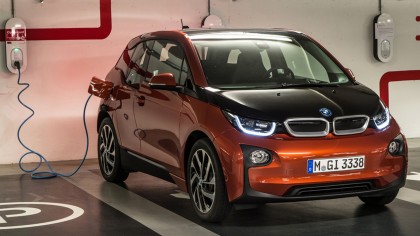
BMW i3
In 2014, BMW introduced the world to its new "i" sub brand, which would house its new electric i3 and i8 models. While the i8 plug-in hybrid was a sexy supercar for those select buyers that could afford a $100,000 sports car, the i3 with its electric powertrain and small, city-friendly footprint, grabbed most of the attention.
Rather than base its electric car off of an existing platform, BMW chose to create a standalone model that would be designed from the ground up to be an electric car. This meant that BMW could optimize every part to make it as light as possible, and even its shape would be optimized with aerodynamics in mind.
The i3 is the first production car to use carbon-fiber-reinforced plastic to keep its weight down. The unique material is just as strong as steel, but half the weight.
The i3 is also the only vehicle on the market that can be powered by a fully electric or plug-in hybrid powertrain. If you choose the electric i3, you'll be able to travel up to 81 miles (about 130 km). But, if you want to drive further, the i3 with a gasoline range extender increases the total driving range to 150 miles (about 241 km).
How does the i3 with range extender work? Just like the Volt, the i3 drives first in electric mode up to around 70 miles (about 112 km), then a two-cylinder gas engine mounted in the back powers up to charge the lithium-ion battery.